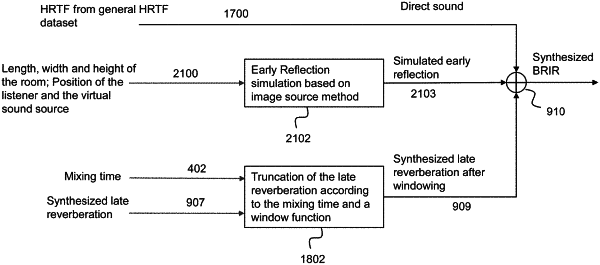| CPC G01H 7/00 (2013.01) [H04S 2420/01 (2013.01)] | 16 Claims |

|
1. A device for estimating acoustic parameters, wherein the device is configured to:
record an acoustic signal;
estimate a frequency-dependent reverberation time in a lower frequency range based on the recorded acoustic signal;
extend the frequency-dependent reverberation time to a higher frequency range based on a predetermined model to obtain an extended frequency-dependent reverberation time;
synthesize a Binaural Room Impulse Response (BRIR) based on the extended frequency-dependent reverberation time;
estimate a mixing time based on the extended frequency-dependent reverberation time; and
synthesize the BRIR based further on the mixing time, wherein the synthesizing the BRIR based further on the mixing time comprises:
reshaping white noise or white Gaussian noise according to the extended frequency-dependent reverberation time to synthesize the late reverberation part;
truncating the late reverberation part according to the mixing time and a window function; and
combining a Head Related Transfer Function for a direct part and/or early reflection with the truncated later reverberation part to obtain an entire BRIR.
|